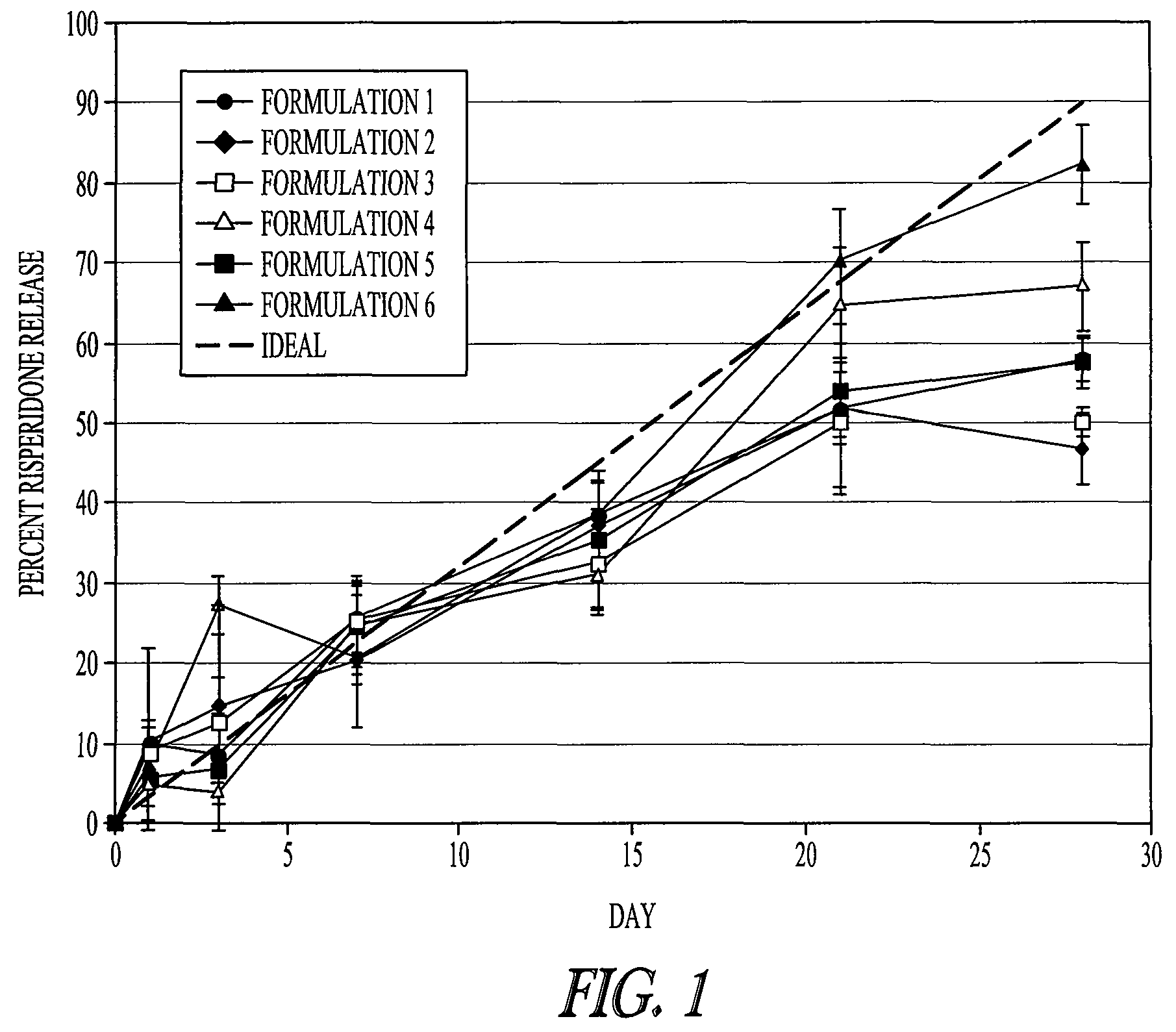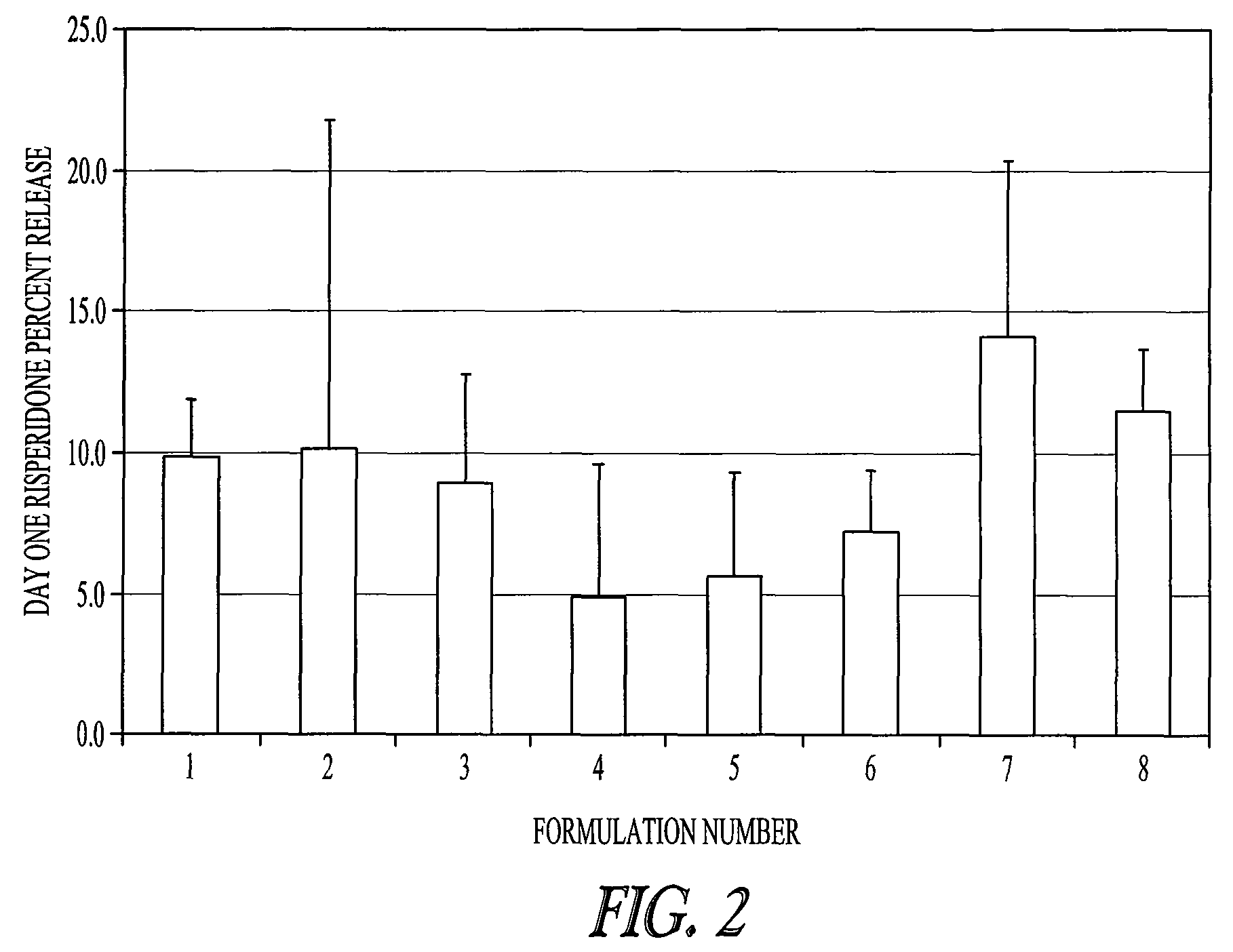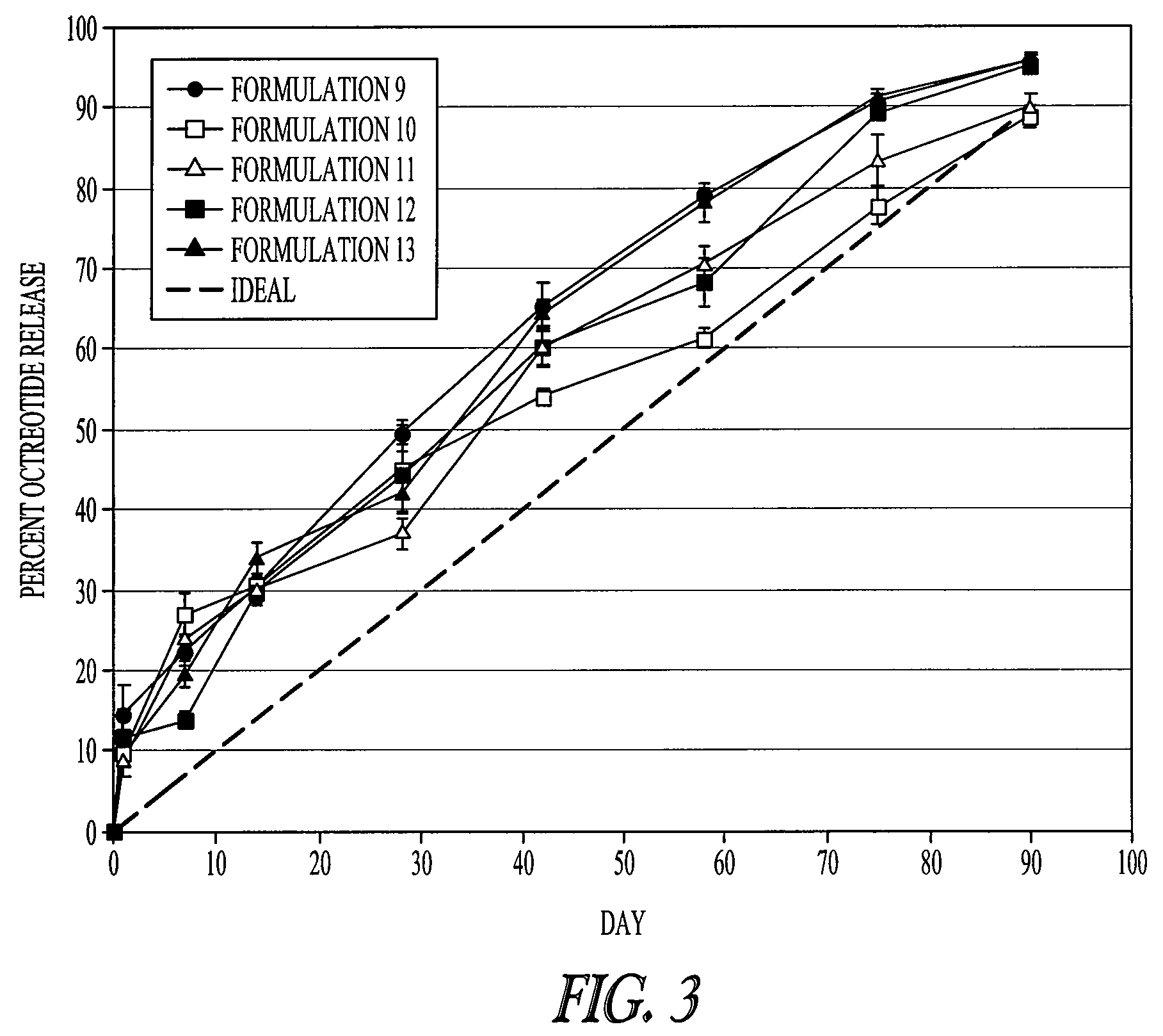Controlled release copolymer formulation with improved release kinetics
a technology of controlled release and release kinetics, which is applied in the direction of prosthesis, drug composition, peptides, etc., can solve the problems of less than optimal release rate, undesirable to have an increase or decrease in the release rate, so as to achieve constant stable release rate of bioactive agents, and slight solubility in body fluids
- Summary
- Abstract
- Description
- Claims
- Application Information
AI Technical Summary
Benefits of technology
Problems solved by technology
Method used
Image
Examples
example 1
Polymer and Oligomer Synthesis
[0073]All polymers and oligomers used in the examples were prepared by bulk copolymerization of DL lactide and glycolide using tin II 2-ethylhexanoate (stannous octoate) as the catalyst. PLG oligomers were prepared using 1,6 hexanediol as the initiator and a reaction temperature of approximately 145° C. The PLGH polymers and oligomer were prepared using glycolic acid as the initiator and a reaction temperature of approximately 165° C. The ratio of initiator to comonomers was varied to change the molecular weight of the polymer. The higher this ratio, the lower the molecular weight of the polymer. The reactions were run for approximately 2.5 hours. This was followed by an approximately 2 hour period at the same temperature of pulling a vacuum on the reaction mixture to remove unreacted monomer. The molten polymer was then removed from the reactor and allowed to cool in dry conditions.
[0074]Unless otherwise indicated, all molecular weights described in th...
example 2
Release Studies in Rats
[0076]All rat preclinical studies were conducted in Sprague-Dawley rats. Five rats per Test Article per time point were injected subcutaneously under full anesthesia in the dorsal thoracic (DT) region with approximately 100 mg of the Test Article. Each injection weight was recorded.
[0077]During the course of the study, the animals were observed for overt toxicity and any existing test site abnormalities, including redness, bleeding, swelling, discharge, bruising and Test Article extrusion at the injection site were observed and recorded. In addition, injection weights were recorded at administration and body weights were taken and recorded at administration and at termination.
[0078]At selected time points, five rats per Test Article were terminated with carbon dioxide and the implants were retrieved.
[0079]Each retrieved implant was then analyzed by HPLC for the amount of active remaining in the implant. This was then subtracted from the amount of active presen...
example 3
Rate of Release of Risperidone in Rats from Atrigel Depots Containing PLG Oligomers
[0080]A variety of delivery systems were prepared by mixing an 80 / 20 PLGH base polymer (purified or not purified) with N-methyl-pyrrolidone and optionally one of the PLG oligomers to form a solution. The delivery systems are described in Table 1. These delivery systems were filled into syringe. The delivery systems were gamma irradiated at 18-28 kGray either in bulk or in the syringe. A second set of syringes was filled with risperidone powder. The contents of a delivery system syringe and a risperidone syringe were mixed by coupling the syringes and passing the syringe contents back and forth to prepare a final formulation of 15% (weight / weight) risperidone.
[0081]
TABLE 1Composition of various PLG copolymer / oligomer Delivery Systemstested with Risperidone in a 28 Day StudyDeliverySystem% Base%NumberBase PolymerPolymerAdditiveAdditive% NMP180 / 20 PLGHp45None055280 / 20 PLGH45None055(unpurified)380 / 20 PLGH...
PUM
| Property | Measurement | Unit |
|---|---|---|
| weight average molecular weight | aaaaa | aaaaa |
| weight average molecular weight | aaaaa | aaaaa |
| weight average molecular weight | aaaaa | aaaaa |
Abstract
Description
Claims
Application Information
 Login to View More
Login to View More - R&D
- Intellectual Property
- Life Sciences
- Materials
- Tech Scout
- Unparalleled Data Quality
- Higher Quality Content
- 60% Fewer Hallucinations
Browse by: Latest US Patents, China's latest patents, Technical Efficacy Thesaurus, Application Domain, Technology Topic, Popular Technical Reports.
© 2025 PatSnap. All rights reserved.Legal|Privacy policy|Modern Slavery Act Transparency Statement|Sitemap|About US| Contact US: help@patsnap.com



